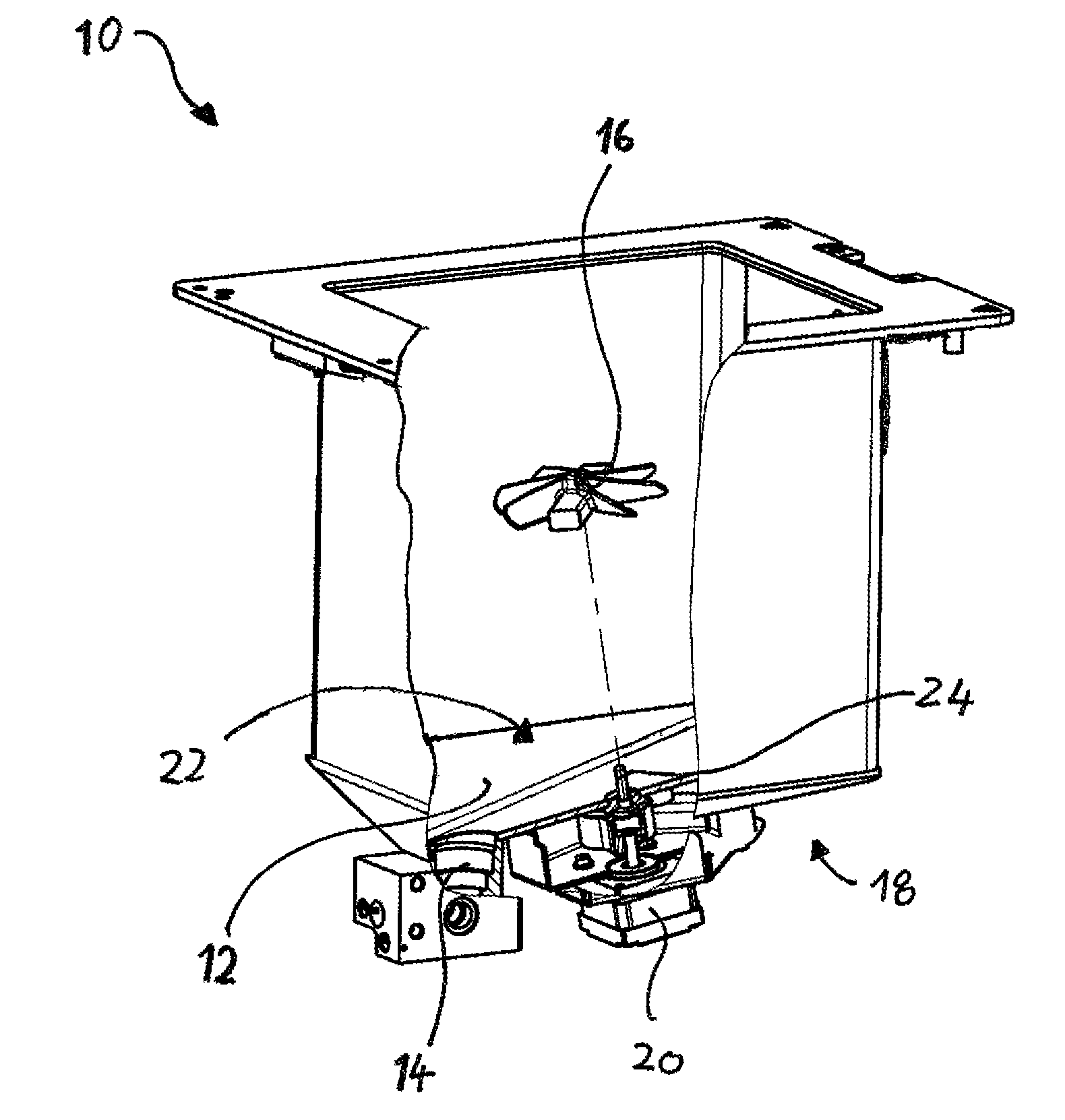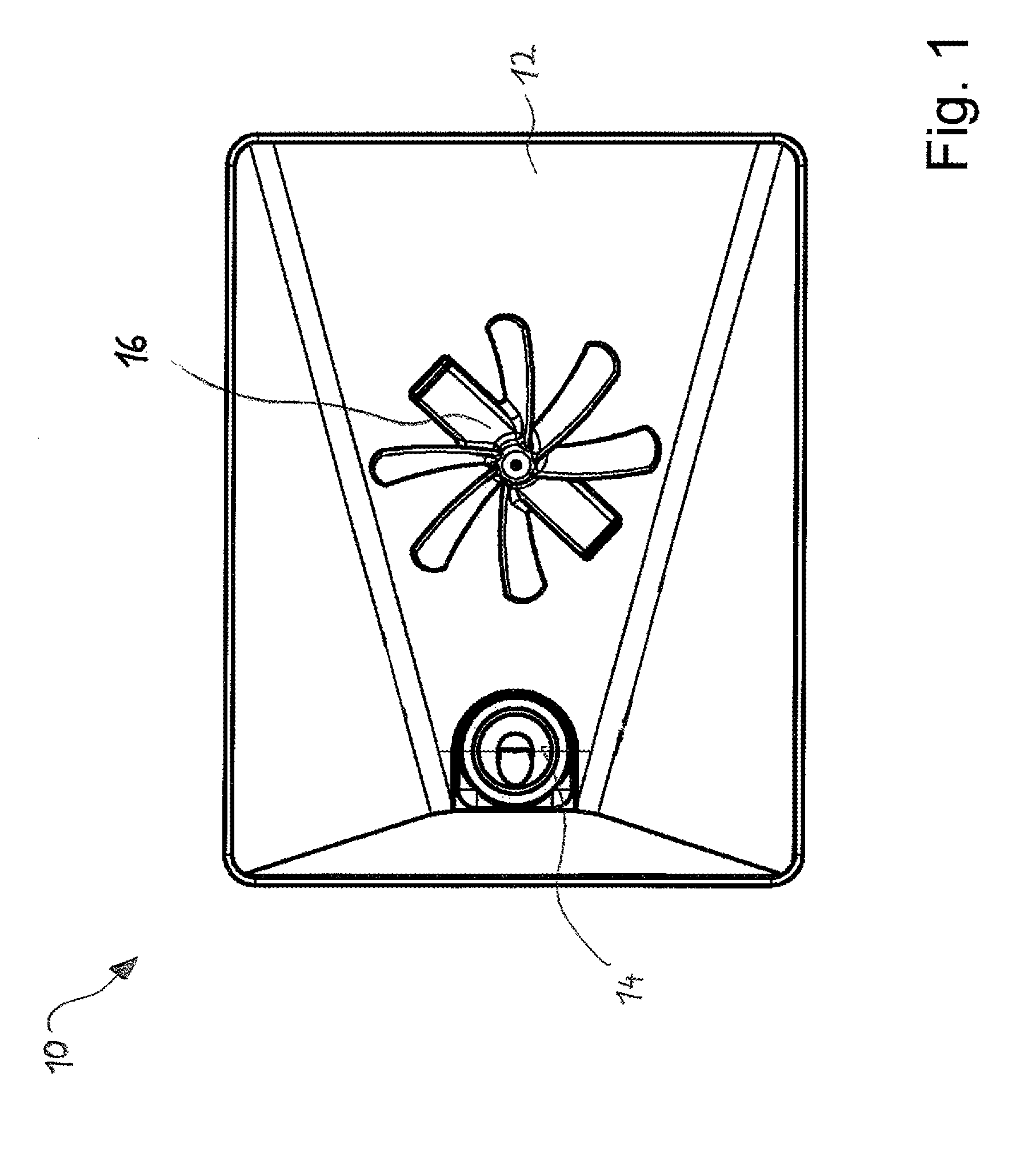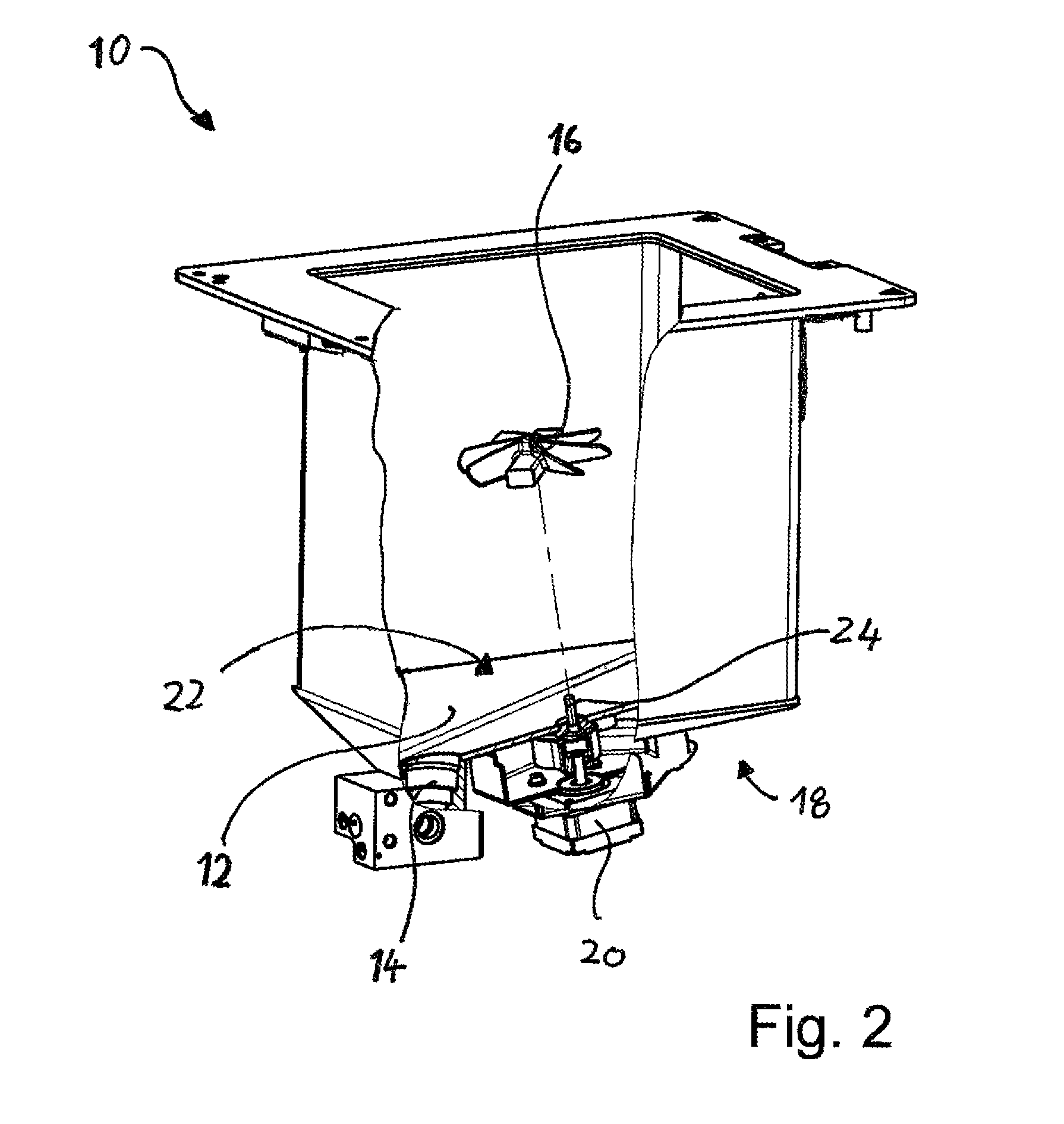Tissue processor for treating tissue samples
a tissue processor and tissue technology, applied in mixers, biochemistry apparatus and processes, mixers, etc., can solve the problems of low stirring effect, small force transmission, and insufficient adhesive force of magnets, and achieve good stirring effect and high force
- Summary
- Abstract
- Description
- Claims
- Application Information
AI Technical Summary
Benefits of technology
Problems solved by technology
Method used
Image
Examples
Embodiment Construction
[0032]In FIG. 1 a top view of a process chamber 10 of a non-illustrated tissue processor is shown. The process chamber 10 is also referred to as retort. It comprises a bottom in which an outlet 14 is arranged through which a liquid contained in the process chamber 10 can be drained off. The tissue processor serves for the treatment of tissue samples with liquids in order to prepare the tissue samples for a later microscopic examination. For this, at least one liquid and at least one tissue basket in which the tissue samples are arranged are placed in the process chamber 10. In order to guarantee a uniform treatment of the tissue samples with the liquid it is necessary that there are homogeneous properties, in particular a homogeneous heat distribution, all over the liquid. In order to achieve this, the process chamber 10 is formed as a vessel of a magnetic stirrer, and a stirring body 16 is arranged within the process chamber 10. When the stirring body 16 rotates, the liquid contain...
PUM
 Login to View More
Login to View More Abstract
Description
Claims
Application Information
 Login to View More
Login to View More - R&D
- Intellectual Property
- Life Sciences
- Materials
- Tech Scout
- Unparalleled Data Quality
- Higher Quality Content
- 60% Fewer Hallucinations
Browse by: Latest US Patents, China's latest patents, Technical Efficacy Thesaurus, Application Domain, Technology Topic, Popular Technical Reports.
© 2025 PatSnap. All rights reserved.Legal|Privacy policy|Modern Slavery Act Transparency Statement|Sitemap|About US| Contact US: help@patsnap.com



